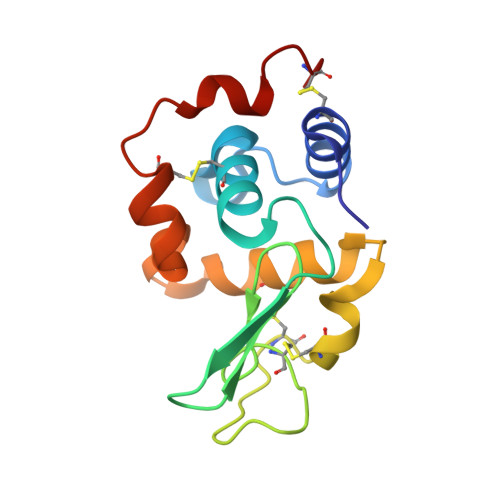A camelid antibody fragment inhibits the formation of amyloid fibrils by human lysozyme
Dumoulin, M., Last, A.M., Desmyter, A., Decanniere, K., Canet, D., Larsson, G., Spencer, A., Archer, D.B., Sasse, J., Muyldermans, S., Wyns, L., Redfield, C., Matagne, A., Robinson, C.V., Dobson, C.M.(2003) Nature 424: 783-788
- PubMed: 12917687
- DOI: https://doi.org/10.1038/nature01870
- Primary Citation of Related Structures:
1OP9 - PubMed Abstract:
Amyloid diseases are characterized by an aberrant assembly of a specific protein or protein fragment into fibrils and plaques that are deposited in various organs and tissues, often with serious pathological consequences. Non-neuropathic systemic amyloidosis is associated with single point mutations in the gene coding for human lysozyme. Here we report that a single-domain fragment of a camelid antibody raised against wild-type human lysozyme inhibits the in vitro aggregation of its amyloidogenic variant, D67H. Our structural studies reveal that the epitope includes neither the site of mutation nor most residues in the region of the protein structure that is destabilized by the mutation. Instead, the binding of the antibody fragment achieves its effect by restoring the structural cooperativity characteristic of the wild-type protein. This appears to occur at least in part through the transmission of long-range conformational effects to the interface between the two structural domains of the protein. Thus, reducing the ability of an amyloidogenic protein to form partly unfolded species can be an effective method of preventing its aggregation, suggesting approaches to the rational design of therapeutic agents directed against protein deposition diseases.
- Department of Chemistry, University of Cambridge, Lensfield Road, Cambridge CB2 1EW, UK.
Organizational Affiliation:

















